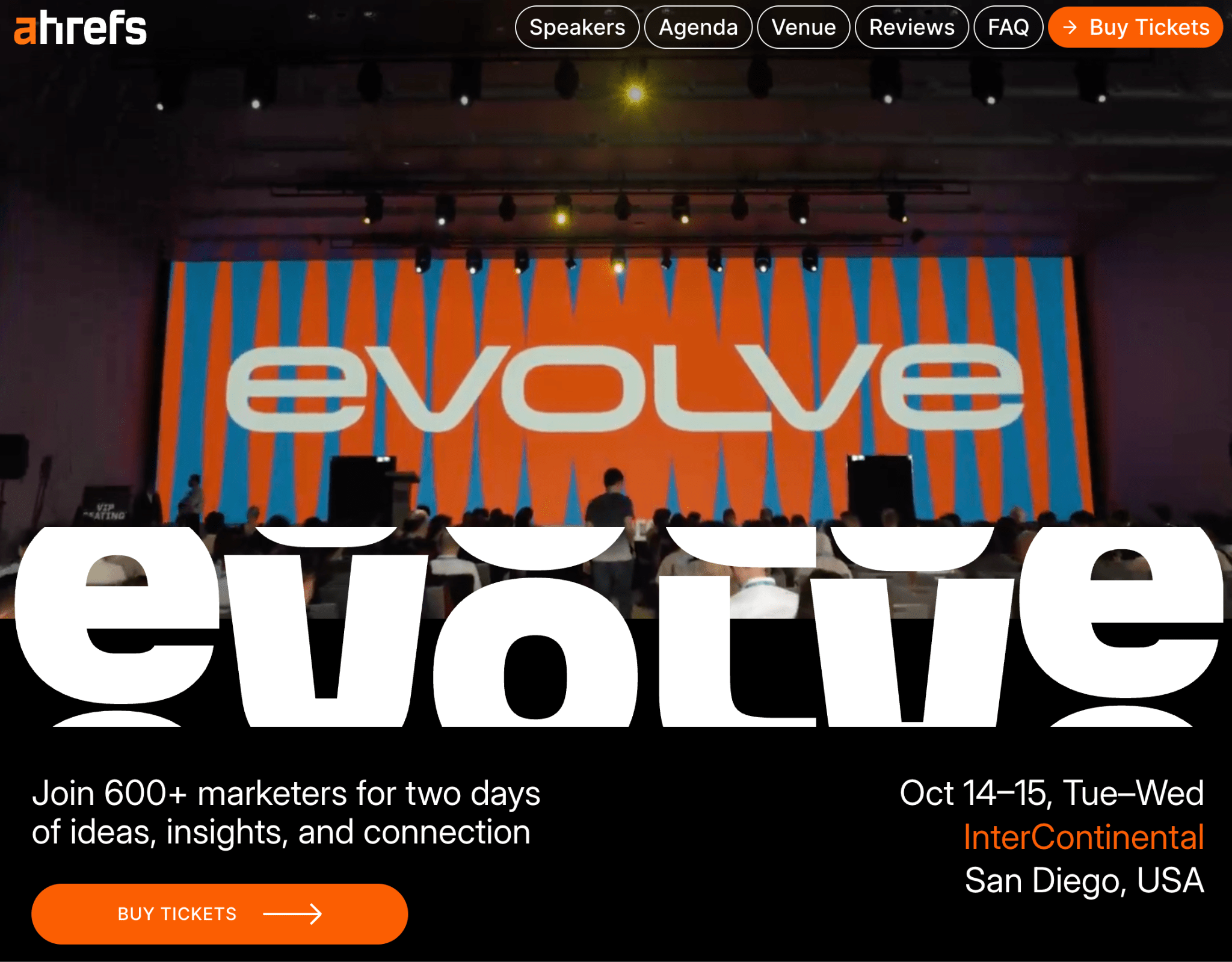But even if you’re our most loyal fan, there will still be plenty of insights that you’ve missed or have forgotten already. Many of these ideas are too good to let vanish.
So we went back through our catalog and rescued the insights from our guests that deserve to be referenced over and over again.
The best part? Many of our guests will also be on stage at Ahrefs Evolve in San Diego on October 14 and 15.
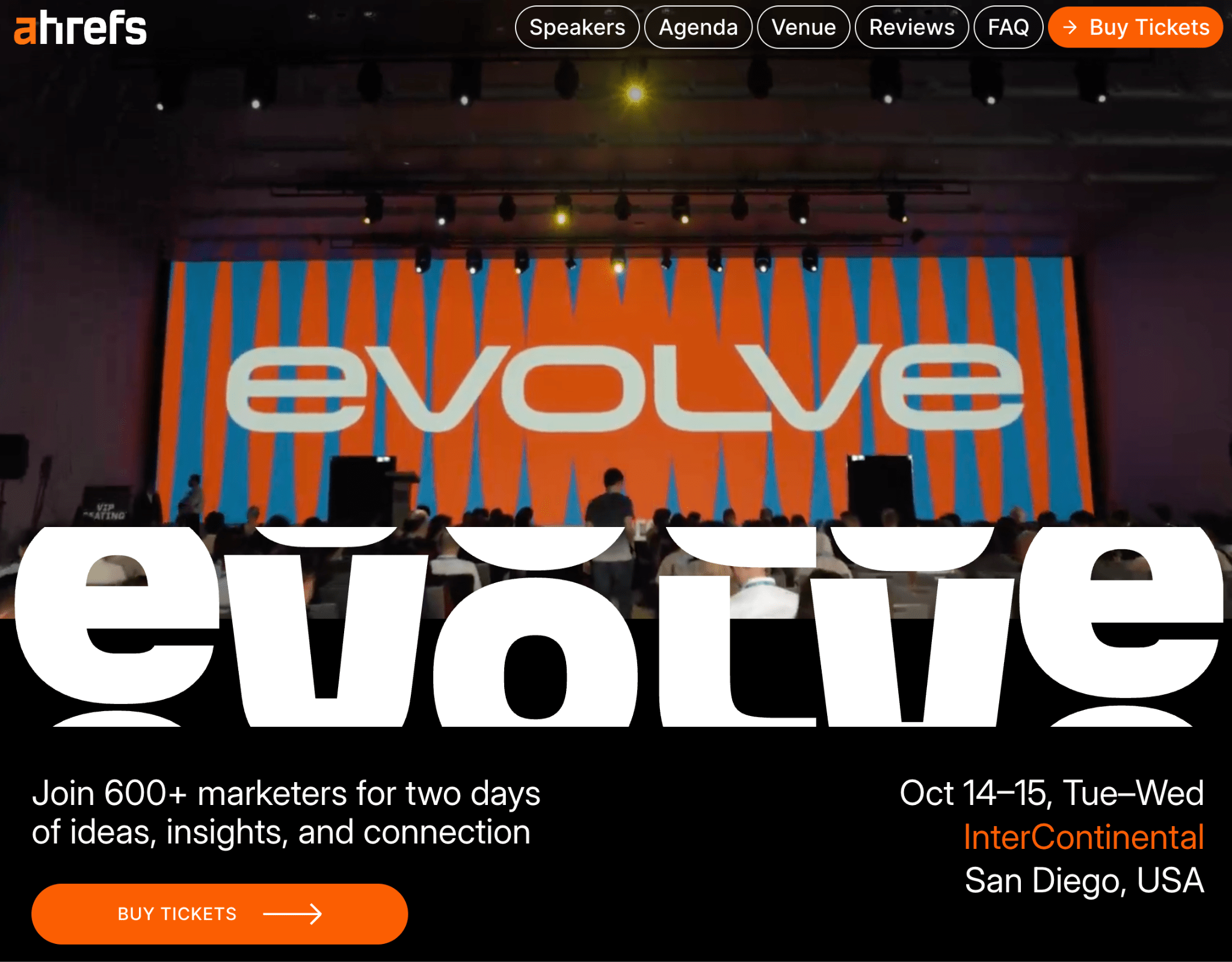
So, think of this as both the director’s cut of our podcast and your front-row preview to Ahrefs Evolve.
When he came on the podcast, he didn’t sugarcoat it.
“If you’re just competent, you’re going to be eaten alive by AI. AI is already competent. It’s more than competent. It’s magical. So we’ve got to dig deep and do better.”
How do we do better? Mark says we should make marketing more human, more like art.
“I’m not going to buy tickets to hear AI play a Stephen Wilson song. He means something to me. There’s an emotional connection to his humanity and the stories he tells in his songs. our marketing in some way must approach art. It must unleash and highlight this human element.we need to teach through our stories, our experiences, our education. We have to talk about what makes us happy, what makes us excited, what makes us angry, because that’s what will connect with people. It’s this expression of the human experience. That’s what art is. It’s an expression of the human experience.”
Mark will be speaking on “How Humans Win in an Al Marketing World” at Ahrefs Evolve. See Mark live at Ahrefs Evolve, San Diego.
On the podcast, she explained why so many founders misdiagnose their marketing problems.
“Founders often think they have an engine problem: they’re not doing enough channels, not sending enough emails, not running enough ads. But really their fuel sucks. They’re pushing bad messaging into channels that could work if the content was better.”
Emily breaks startup marketing into three parts:
- Foundation: your ICP, your positioning, your market.
- Fuel: the ideas, content, and creatives you produce.
- Engine: the channels you use to distribute that fuel.
“You’re not going to bring a Tesla to a regular gas station. The wrong fuel for the wrong engine won’t work. Startups need the right fuel and the right engine, and they have to match.”
She also urges startups to look for what she calls marketing advantages: the unfair edges that only your company has. At Carta, that meant using their proprietary data to publish a landmark report on the gender equity gap. The campaign was provocative, press-worthy, and put Carta on the map.
“Copying another company’s playbook won’t get you there. I’m always asking: what advantages do you have that nobody else does? That’s where you should double down.”
Emily will be speaking on “Lessons for Small Content Teams: How I Manage My Content Strategy As A Two-Person Team And A Newsletter With ~70k Subscribers” at Ahrefs Evolve. See Emily live at Ahrefs Evolve, San Diego.
On the podcast, Peep was blunt about why so much content marketing fails:
“Mediocre content is dangerous. Fine content destroyed us at CXL. It wasn’t bad, but it wasn’t great either. And that’s the worst place to be. Bad content people ignore. Fine content wastes everyone’s time and erodes your brand.”
For him, content that wins needs to be either:
- Exceptionally useful (unique insights, data, frameworks), or
- Exceptionally opinionated (a strong, even contrarian, point of view).
Everything else is noise.
Peep will be speaking on “B2B Brands Don’t Have A Pipeline Problem, They Have A Recall Problem” at Ahrefs Evolve. See Peep live at Ahrefs Evolve, San Diego.
Having been behind some of APAC’s wildest marketing stunts, he’s honest:
“All the great ideas start as bad ideas. Do the opposite of what you’re ‘supposed’ to do, then make the narrative tie back to your brand.”
Some of his best stunts (and misses):
- The “vandalism” reveal (Singapore) — Delbert seeded a fake telco campaign in MRT stations, then doodled over the ads with creators before revealing Circles.Life and its 20GB for $20 offer. In pristine Singapore, it hit a cultural nerve. Result: 10× new-user run rate overnight, CAC down by ⅓–⅔, and brand awareness jumping from single digits to 30–40%.
- $3 Baller “vending machine” — Pay $3 and get $50 from a human inside a faux vending machine. It got tons of viral attention and press covered it extensively. The police showed up.
- CMB’s “send casuals away” feature — CMB wanted to prove that it was an app for serious relationships. So, if a user selected “casual” during sign-up, the app pointed you to competitors instead. A contrarian gesture that most companies wouldn’t make.
How Delbert decides what to ship:
- Aim for expected value, not heroics: Budget small, take many shots, and don’t count on a stunt to hit the forecast.
- Account for hidden costs: Stunts are “cheap” in cash but expensive in team energy and courage.
- Exploit the cultural erogenous zone: What shocks in Singapore won’t budge Manila. Context is king.
- Distribution helps, but the idea is king: Seeding and outreach are icing; a meh idea won’t travel.
“If 10% of your wild ideas land, that’s a win if each roll of the dice is affordable.”
Delbert was part of a panel at Ahrefs Evolve 2024 and also spoke at Ahrefs Evolve Mini 2025 in Singapore.
On the podcast, he shared his biggest insight: Early-stage marketing isn’t about following a playbook. It’s actually about building a portfolio of experiments.
“I always think of myself as a fund manager. The budget is my fund, and the stocks are my marketing channels. My job is to pick the right portfolio mix, based on what the company needs, what’s already been tried, and the CEO’s risk profile.”
Instead of searching for one silver-bullet channel, Madhav runs dozens of small experiments quickly, then doubles down on the two or three that work.
“At Hubstaff, I tried 80 or 90 tactics in six months. Out of that sprint, maybe two or three emerged as real growth drivers. That’s the job: run many ideas fast, find your hits, and build around them.”
He also warns against overcomplicating attribution too early: what matters is trust and directional signals, not perfect data.
Madhav will be speaking on “How We 7x’d Brand Awareness in 6 Quarters Using ‘Pattern Interrupt Marketing’” at Ahrefs Evolve. See Madhav live at Ahrefs Evolve, San Diego.
Before joining Ahrefs, he was on the podcast sharing his vast SEO and business wisdom with the world.
His edge comes from obsessive depth: doing the work others won’t.
“I’ve written 300 articles that nobody cared about. The only way I get attention now is by doing the work no one else will: manually checking 10,000 queries, analyzing thousands of websites, and putting out research that’s bulletproof.”
That level of rigor has earned him mentions in TechCrunch, Financial Times, and Business Insider.
His lesson for marketers is simple: go deeper than anyone else in your industry. True differentiation comes from effort others aren’t willing to invest.
Glen is notoriously private and will likely not be found speaking at any events. But look forward to his articles on our blog!
He also built ClickUp’s content into the best in B2B SaaS, surpassing 1 billion impressions in 2024.
What’s his secret? Treat content like a creative studio.
Instead of pushing product updates, Chris hired actors, writers, and comedians to make workplace sketches that are funny, relatable, and endlessly shareable. Then, when the audience is warmed up, ClickUp retargets them with product-led ads.
But Chris believes this isn’t just ClickUp’s advantage. It’s the future:
“All B2B companies are going to have a full-time creator. 100%.”
His advice to marketers is simple: stop following “best practices,” study what actually entertains people, and invest in talent that can pull it off. Because in a world where attention is scarce, every SaaS company is competing with Netflix and TikTok.
Chris will be speaking on “The SaaS Social Playbook: Turning Organic Content Into a Growth Channel” at Ahrefs Evolve. See Chris live at Ahrefs Evolve, San Diego.
Her big idea flips the usual “employee advocacy” script: have employees create short videos that go on your brand’s channels, because authenticity beats polish and scales across recruiting, culture, and sales.
Short video is now how people search and discover. That means your brand feeds can’t be occasional press releases; they need a steady cadence of human clips from real teammates: product tips, day-in-the-life, quick stories, green-screen explainers. But it only works if you treat it like a program, not a one-off.
“I don’t believe we have 3 seconds anymore… it’s the first frame.”
“It’s not just about posting one video and you’re done. It’s about creating a channel, a community.”
Melissa’s playbook in a nutshell:
- Train and set guardrails. Don’t just go to a Gen Z employee and tell them to “make a video”. Teach hooks, first-frame text, pacing, and pattern interrupts and review every post.
Publish consistently. Track saves, comments, and completions to double down on what resonates. - Aim for business outcomes. Short video on brand channels helps attract talent, retain/engage teams, and sell (think Sephora associates genuinely recommending their favorite products)
If your brand is still trying to pass off TV spots as Reels, you’re “putting lipstick on a pig.” Put real people, real voices, and useful micro-stories on your brand account and make it a habit.
Melissa spoke at Ahrefs Evolve Mini 2025 in Singapore!
On the podcast, Kevin made one bold prediction:
“2024 will be the peak traffic year. From here, clicks go down, impressions go up. AI is changing the game, and SEO is entering a new cycle.”
But rather than declaring SEO dead, Kevin sees it evolving. Traffic may decline, but revenue doesn’t necessarily follow the same path, especially as AI Overviews start showing up for more commercial queries.
His advice for SEOs is simple: Don’t just optimize for keywords, optimize for actions. Every search is a step toward doing something: buying, solving, creating. If your site only informs but doesn’t help people act, they’ll go to AI instead.
“The first principles of SEO still apply—relevance, freshness, authority—but user behavior has shifted. People are typing longer, hyper-specific prompts, and there’s a vacuum of content that actually answers those. Whoever fills it will win.”
Kevin will be speaking on “What Content Works Well in LLMs” at Ahrefs Evolve. See Kevin live at Ahrefs Evolve, San Diego.
The core lesson from his episode: Traffic alone is worthless unless it drives revenue.
That’s why JH is skeptical of the hype around “zero-volume keywords.” Sure, some may bring in a trickle of traffic, but they rarely move the needle for venture-scale SaaS companies:
“If you’re hinging your career on things that bring 100 clicks a month, you need to create so much content. Search might not even be the right channel for it.”
Instead, he urges marketers to think bigger:
- Use search as an entry point, but funnel that traffic into brand-driven and educational content that builds trust.
- Invest in product data studies that get press and links (like DocSend’s landmark VC pitch deck study).
- Double down on events, partnerships, and distribution channels where your buyers already gather.
For JH, it all comes back to a simple truth: volume is vanity, revenue is sanity.
John-Henry will be speaking on “Adopting Al: Everything We’ve Learned Becoming an Al-First Agency” at Ahrefs Evolve. See John-Henry live at Ahrefs Evolve, San Diego.
Ahrefs Evolve is your chance to take those ideas off the page and into practice. You’ll hear the unfiltered versions on stage, ask follow-up questions in person, and swap notes with marketers who are running the exact plays you care about.
See you at Ahrefs Evolve in San Diego, October 14–15.
Similar Posts
How can ChatGPT Affect Domain Names?
Changes you know about – ChatGPT, the chatbot, founded by OpenAI that has caught the fancy of everyone from developers, marketers, AI experts, and businesses. Now, there are a lot of predictions about how this savvy little bot will change the way we work. Given our love for domains, we thought we could take a…
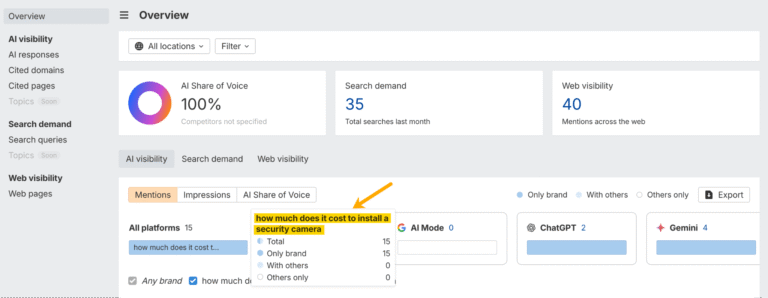
ChatGPT May Scrape Google, but the Results Don’t Match
We know that AI assistants like ChatGPT access search indices, like Google and Bing, to retrieve URLs for their response. But how, exactly? To find out, we’ve run a series of experiments looking at the relationship between the URLs cited by AI assistants, and the results found in Google when searching for the same topics….
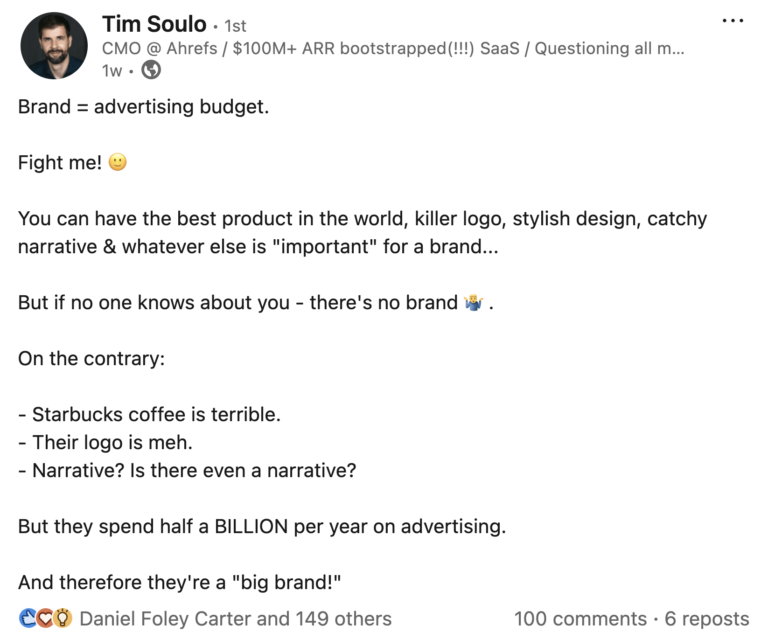
How to Measure Brand Awareness in 2025 (AKA the Year of the Brand)
Brand awareness is one of the “fuzziest” growth channels. And when things get fuzzy, you need concrete ways to prove your time and investment is paying off. Below I’ve laid out 11 workflows you can follow to measure the success of your brand awareness—including some little-known Ahrefs use cases. Tim Soulo on LinkedIn There’s no right…
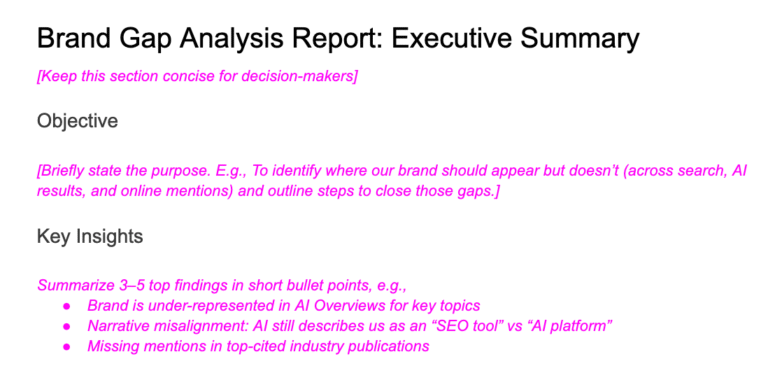
Brand Gap Analysis: Find Out Why You’re Invisible in AI Search
Your brand presence shouldn’t depend on luck, algorithms, or guesswork. It should be built and improved with precision so you show up in all the places that matter, exactly as you want to be represented. That’s what a brand gap analysis enables. It also turns brand visibility from a vague concept into something measurable and…
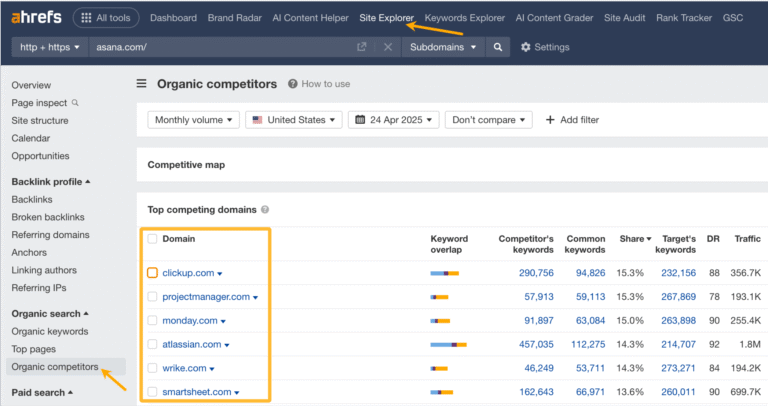
How to Do an Actually Useful PPC Competitive Analysis Using AI
A competitive PPC (Pay Per Click) analysis is all about seeing what your competitors are doing with their paid ads on platforms like Google Ads, so you can do it better. It helps you uncover which keywords they’re spending money on, what their ads and landing pages look like, and how much budget they might…
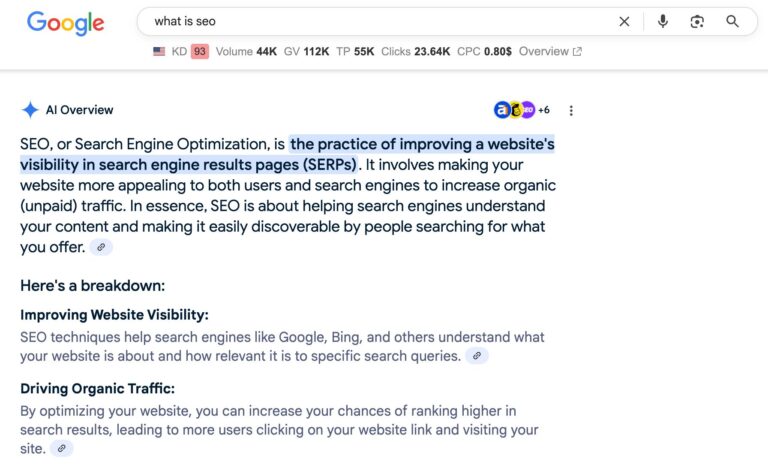
Is SEO Dead? Real Data vs. Internet Hysteria
Has AI and social media killed SEO in 2025? Not even close. Here’s the thing: on one side, we’ve got how people feel about SEO these days—the doom-and-gloom headlines, the panic about zero-click searches, the fear that AI has made everything obsolete. But on the other hand, the data tells a totally different story. The data…

